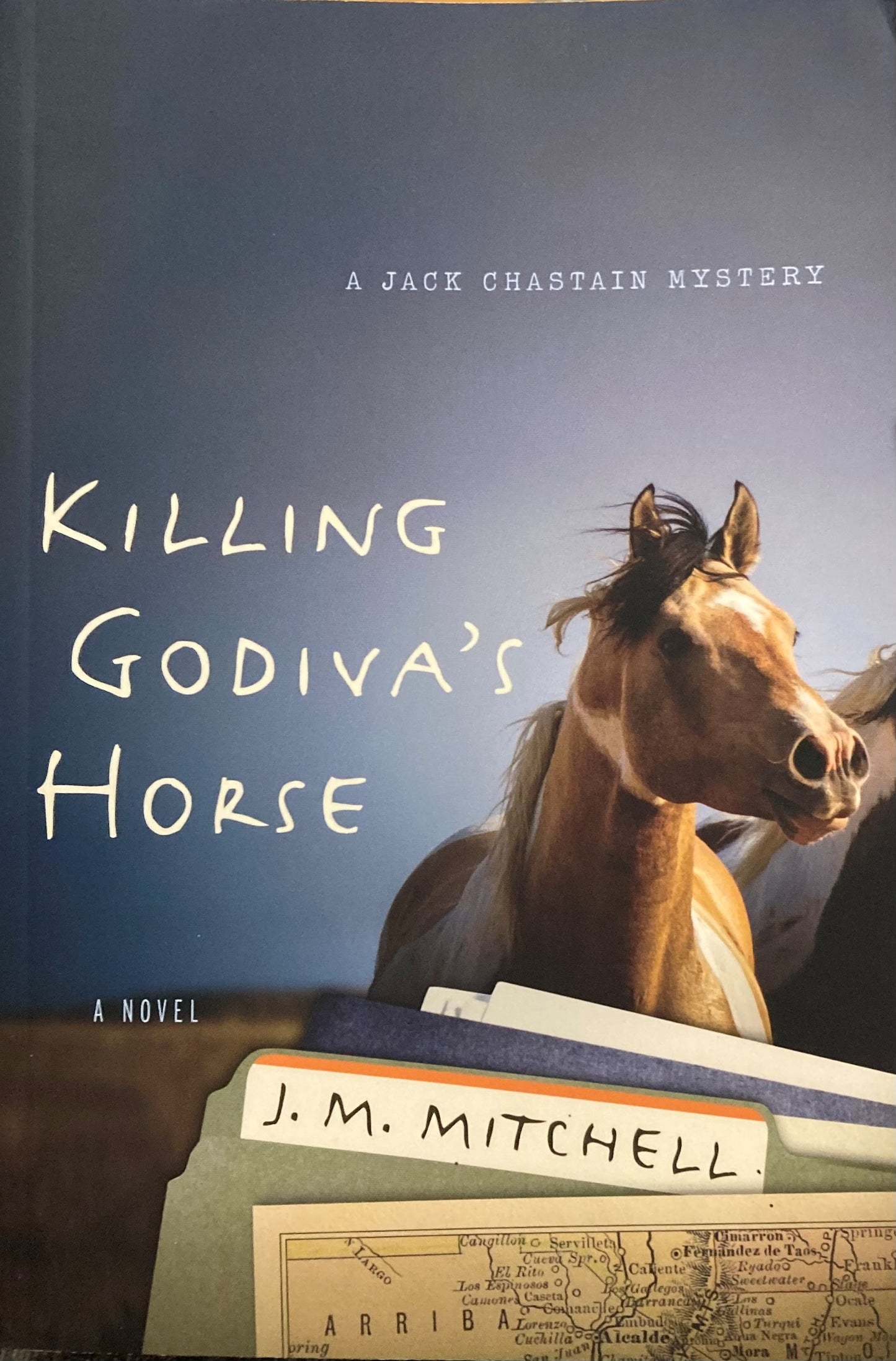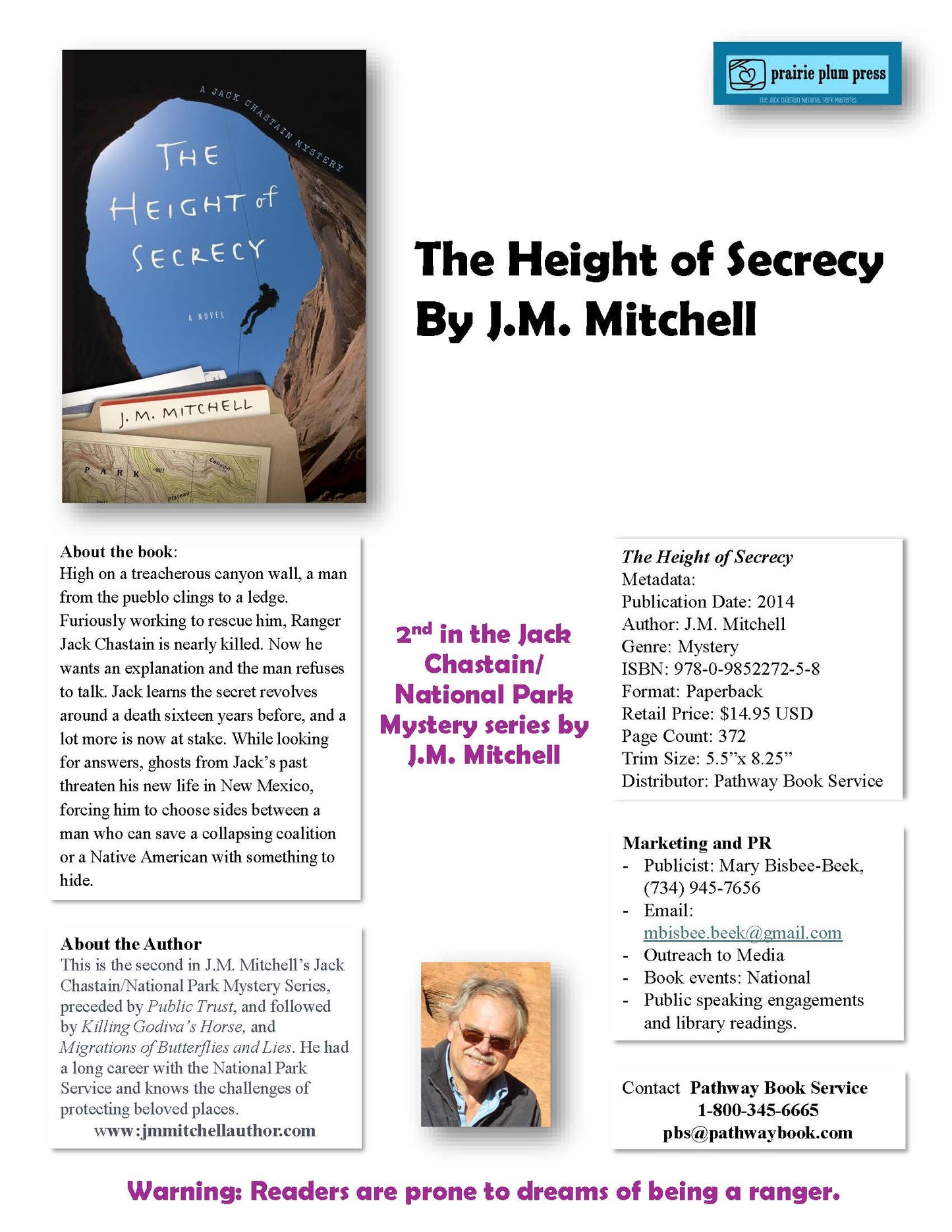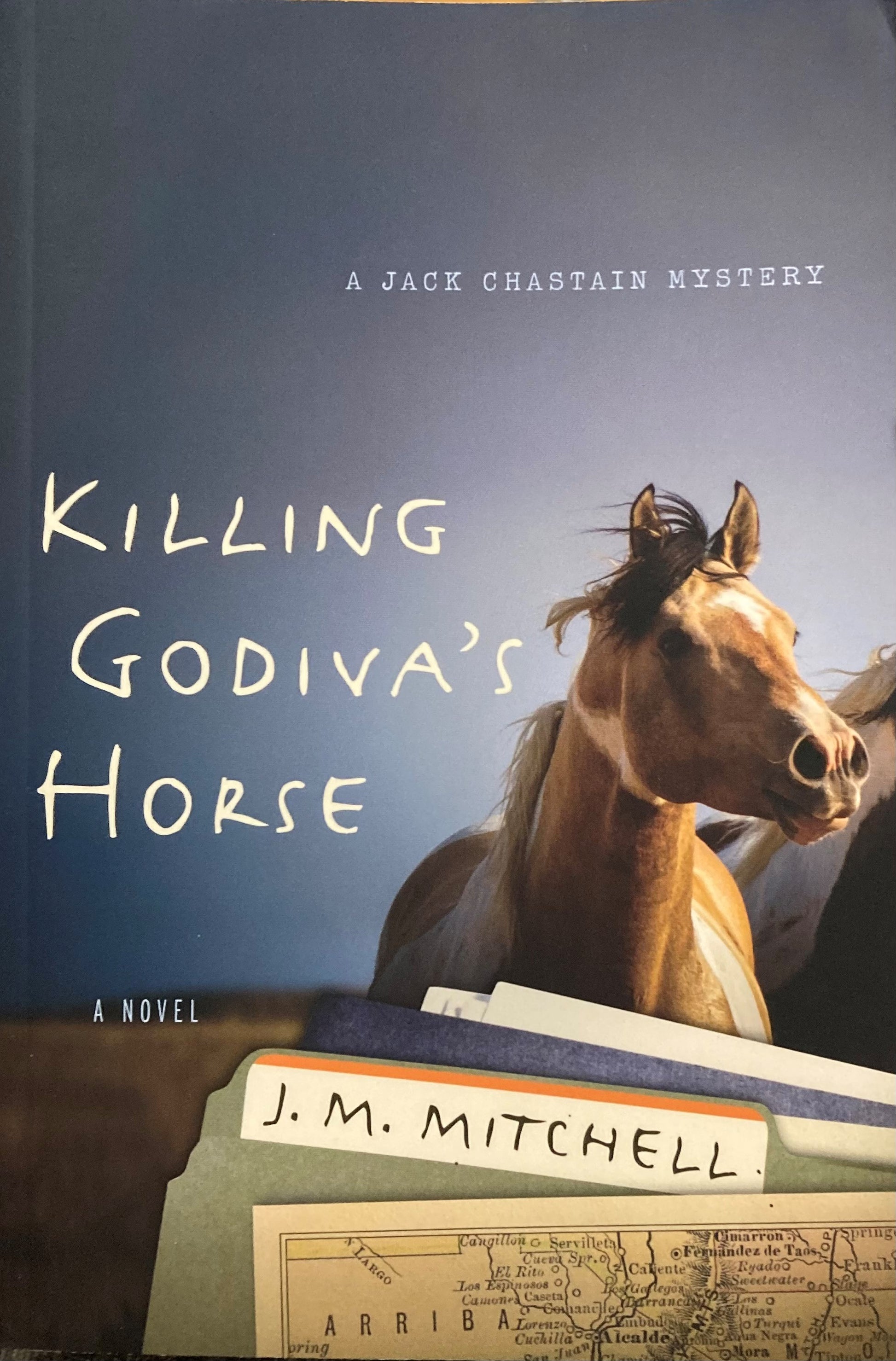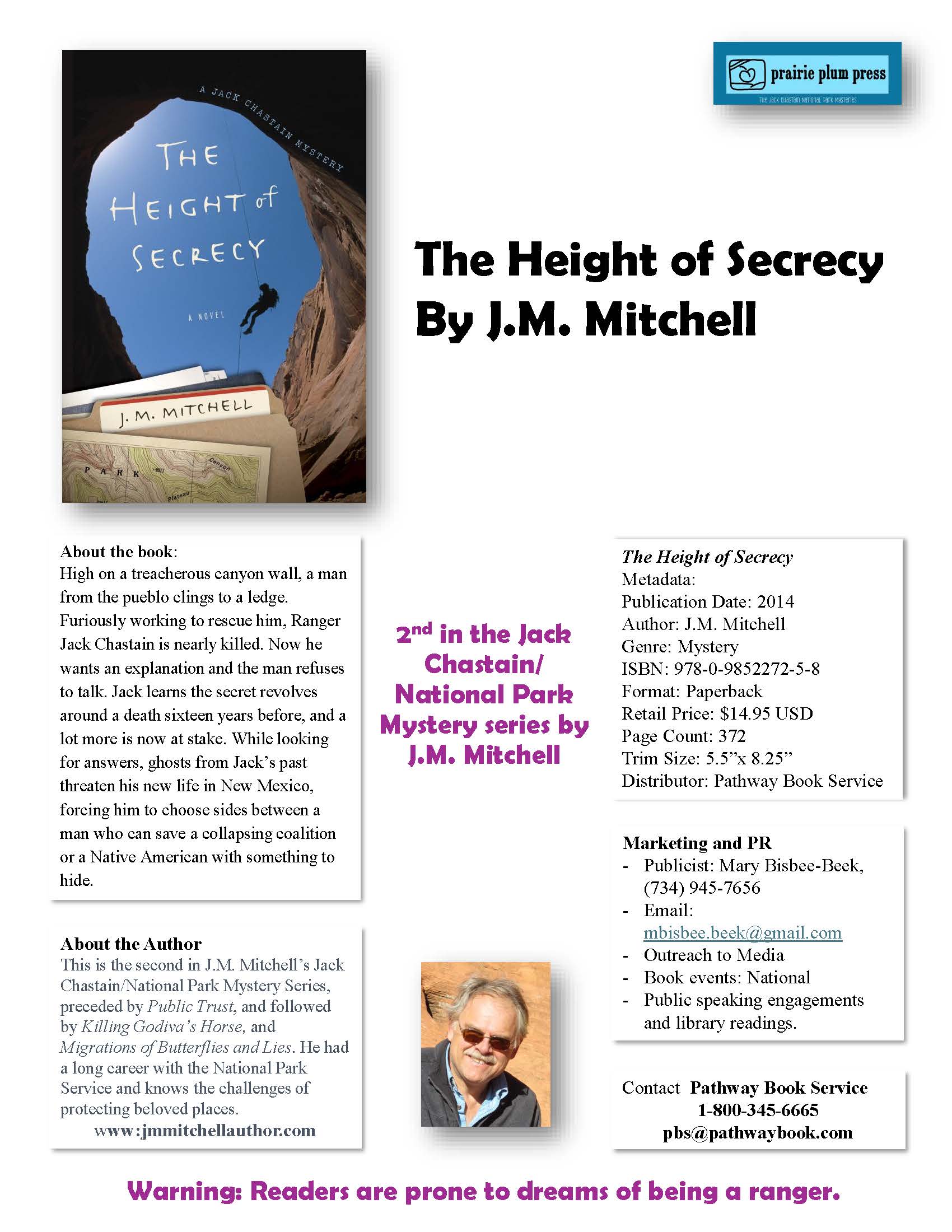Killing Godiva's Horse
Killing Godiva's Horse
Couldn't load pickup availability
View full details
Why would a congressman attacking Park Ranger Jack Chastain compare his own cause to that of Lady Godiva? Honorable the congressman is not, and his motives leave Chastain with little choice but to go after the horse he rode in on.
When Ranger Jack Chastain is drawn into battle by a man trying to start a western lands rebellion, the agency hides him in Kenya until the storm passes and to finish the research of a scientist killed by rhino poachers. While there, he hears something shocking, a campfire revelation that pitches Jack into a dangerous investigation of a ruthless rhino horn buyer.
But Jack's life in New Mexico comes unraveled, forcing him home, and—inadvertently—onto a raft on an angry river, trapped between warring politicos. One man's pain can be another man's game. If the game is being played to hide secrets, the truth can be hard to find.
An action and adventure mystery sitting at the crossroads of international and wild-country thrillers, the likes of Dan Brown, Steve Berry, and C.J. Box. A great gift for lovers of national parks and action-packed mysteries. Buy now and enter the world Ranger Jack Chastain fights to protect.
_________
“Ranger Jack Chastain is an intriguing and welcome series protagonist. Truly refreshing, this novel has plots that contain western lands rebellion, Kenya, rhino horn poachers, and life in New Mexico. Mitchell has taken a big, international, action-packed plot and it works.” –Roundup Magazine, Western Writers of America
“Rhinos, wild horses, politics—and dead bodies—set a frenetic pace, from DC to Kenya. Do you like books that hit the ground running and pull you in with multiple plotlines that converge in a heart-thumping climax? Then Killing Godiva’s Horse is right up your wheelhouse.” –Colorado Sun.
J.M. (Jerry) Mitchell had a long career with the National Park Service and knows the challenges of protecting beloved places. He retired as Chief of the agency's Biology Division, after working in Yosemite, Grand Canyon and Zion National Parks. He now writes national park mysteries.
Prizes
- Thriller, Colorado Book AwardsRunner-up 2019
- (Contemporary) Western, Colorado Author's League AwardsWinner 2019
- Mystery, New Mexico - Arizona Book AwardsWinner 2023
Review text
Rhinos, wild horses, politics — and dead bodies — set a frenetic pace from D.C. to KenyaThe first chapter of “Killing Godiva’s Horse” plants the seeds of eventually converging storylines in author J.M. Mitchell’s thriller.
From a dream job that was not without its risks came the inspiration for outdoor thrillersAuthor J.M. Mitchell’s career with the National Park Service informs his writing. But he needed extra research on how his Kenyan counterparts did their job.
J.M. (Jerry) Mitchell had a long career with the National Park Service, retiring as chief of the agency’s Biological Resource Management Division, after having worked in Yosemite, Grand Canyon and Zion National Parks, Washington, D.C. and Fort Collins, Colorado
. He and his wife, Cassy, split their time between Littleton and their ranch on Colorado’s Western Slope.
The following is an interview with J.M. Mitchell.
Each week, The Colorado Sun and Colorado Humanities & Center For The Book feature an excerpt from a Colorado book and an interview with the author. Explore the SunLit archives at coloradosun.com/sunlit
What inspired you to write this book?
A love of what I did over a career. Who gets to wake up—every morning—and immerse themselves in nature? In the midst of places as spectacular as Yosemite Valley, or Grand Canyon, or Zion Canyon? Well, I did. And, I can’t count the times someone told me they envied such a life, as a biologist or a ranger in one of those magical places. Because of that, I try to write my stories in such a way as to give the reader a chance to slip into the shoes of a ranger. But, reader beware … the job is not without risk, and it’s not the bears you should fear. The job requires competence, and it’s not without conflict.
Who are your favorite authors and/or characters?
I grew up on Tony Hillerman and his Joe Leaphorn and Jim Chee, the southwest settings, and the Navajo and Hopi cultures; Trevanian’s Jonathan Hemlock and Nicholai Hel, for how they became who they were; and Ian Fleming’s Bond, for the action and intrigue. Sometime later I became interested in John Grisham and how he told a story and pulled the reader into the head of his characters. In the last few years? Steig Larson and his protagonist, Lizbeth Salander, and Daniel Silva and his Gabriel Allon.
Why did you choose this excerpt to feature in SunLit?
It’s chapter one, an easy choice, and it explains the title. “Killing Godiva’s Horse” starts in Kenya. Why Kenya? Because of this experience: A few years ago I attended a session at the Kennedy School of Government. One day I took a walk with a fellow from an African nation. He told me that a major difference between his nation and mine is that we (the USA) have rule of law. Several things have happened since then to remind me of that man’s words, but I’ve also come to realize that rule of law may be a bit more fragile here than he may have thought.
What was the most fun or rewarding part of working on this book?
I suppose it was writing the river rafting scenes, borrowing from memories of Grand Canyon and the Colorado River, and the community of river guides, and their unique culture. They’re people who’ve been pulled away from other things, into a life that won’t ever really let go of them.
What was the most difficult section to write in this book? Why?
The lead up to the climax was difficult because the emotions (protagonist) Jack Chastain experienced are real, emotions I’ve experienced many, many times. Being conflicted, angry, uncertain, fearful. Worried that your capabilities will fail the test. But, as much as that section was difficult for me emotionally, when I was writing it, the words flew off my fingers.
What was one interesting fact you learned while researching this book?
As I’ve mentioned, “Killing Godiva’s Horse” takes the reader to Kenya. I’ve had colleagues from Africa, but I had to learn more about the differences in their job from ours than I expected. There was much I didn’t know about the demand for rhino horn and elephant ivory, and the fight African rangers must have to preserve their heritage as well as survive.
What project are you working on next?
The next installment of the Jack Chastain story, working title, “Liecraft.”



